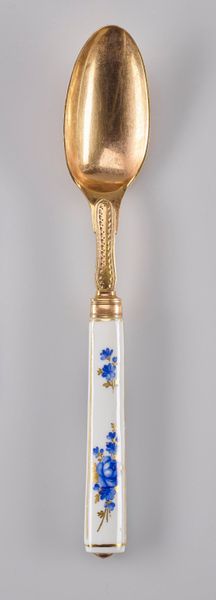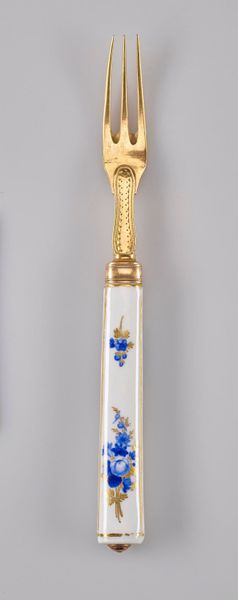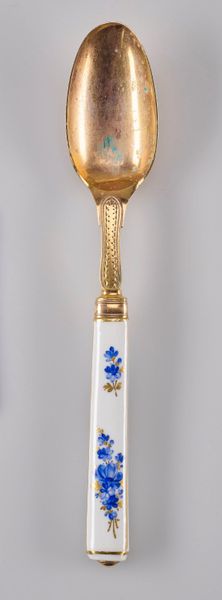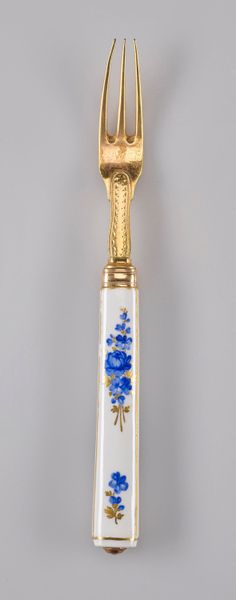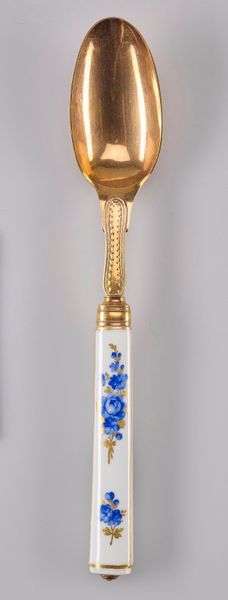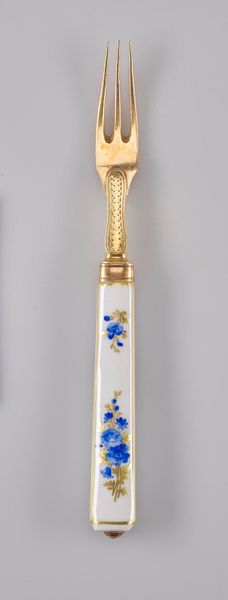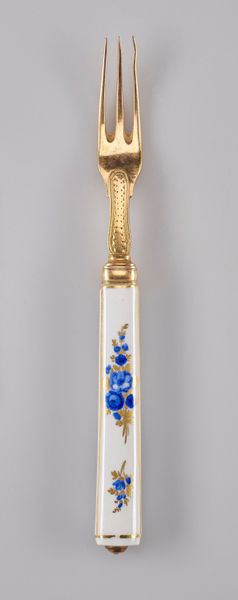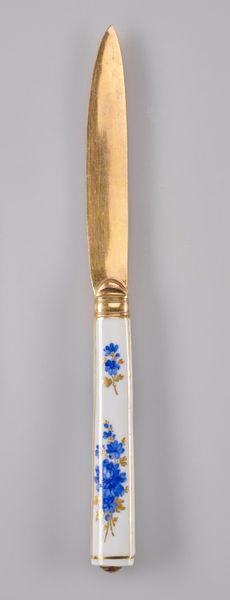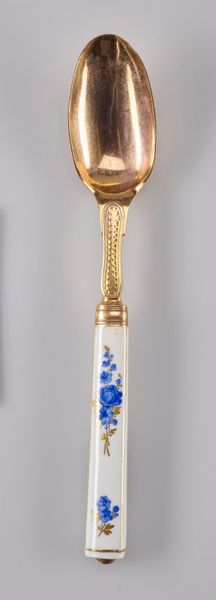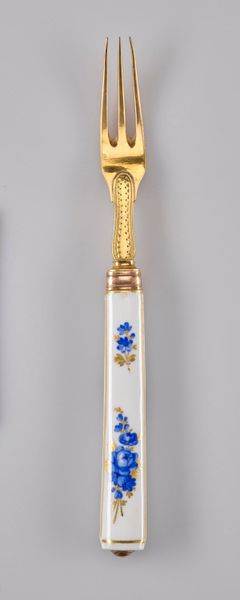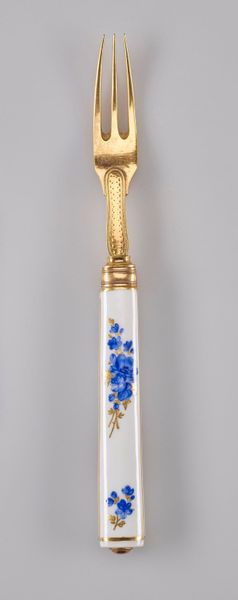
ceramic, hard-paste-porcelain, porcelain
#
germany
#
ceramic
#
hard-paste-porcelain
#
porcelain
#
decorative-art
#
rococo
Copyright: Public Domain
Editor: Here we have an 18th-century fork, crafted by the Meissen Porcelain Factory. It’s porcelain and, surprisingly, falls under the decorative arts category! The elegant white handle adorned with bright blue flowers seems almost too precious to use. What catches your eye, and how do you interpret its Rococo sensibilities? Curator: Oh, what a delicate weapon, a porcelain persuader! It's impossible not to notice the striking contrast between the gold of the functional fork part and the gentle hand-painted blue blossoms on the handle. Does it strike you as functional, or purely decorative? It screams Rococo, doesn't it? The playful asymmetry of the floral design and those elegant gilded touches...it's almost as if the artist is rebelling against the constraints of practicality! Editor: I initially saw it as mostly decorative, but now that you mention the rebellious aspect of Rococo, I’m wondering if it's both! Did they really use these delicate things to eat? Curator: My dear, they certainly did, though likely for very delicate foods! Picture powdered wigs, whispered secrets, and perfectly portioned desserts being coaxed onto this very fork. The humor is almost absurd. It reminds me that even the most refined cultures had a taste for play. What lessons do you think a simple fork can teach us today? Editor: That art can be found in the most unexpected places, even utensils! And that objects, even everyday ones, carry within them stories and attitudes. I'll never look at a fork the same way. Thanks for opening my eyes to that. Curator: And I think I shall now search for my powdered wig!
Comments
No comments
Be the first to comment and join the conversation on the ultimate creative platform.

